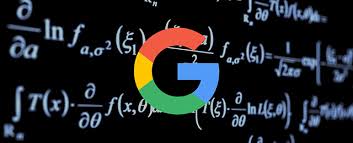Artificial Intelligence can be classified in any number of ways:
Types of A.I.:
- There are two main categories or Levels of A.I.:
(Weak and Strong A.I.)
- There are four Types of A.I. based on Functionalities:
(Reactive Machines, Limited Memory, Theory of Mind, and Self-Awareness).
- There is an ever-growing number of fields or Subsets of A.I. such as Natural Language Processing, Neural Networks, Machine learning, Robotics, and others.
“Weak Artificial Intelligence” or “Artificial Narrow Intelligence” is focused on One Narrow Task
Artificial Narrow Intelligence (ANI) also known as “Weak” AI is the AI that exists in our world today.
Narrow AI is AI that is programmed to perform a single task; whether it’s checking the weather, being able to play chess, or analyzing raw data to write journalistic reports.
ANI systems can attend to a task in real-time, but they pull information from a specific data-set. As a result, these systems don’t perform outside of the single task that they are designed to perform.
Narrow AI is not conscious, sentient, or driven by emotion the way that humans are. Narrow AI operates within a pre-determined, pre-defined range, even if it appears to be much more sophisticated than that.
Every sort of machine intelligence that surrounds us today is Narrow AI. Google Assistant, Google Translate, Siri and other natural language processing tools are examples of Narrow AI. Some might assume that these tools aren’t “weak” because of their ability to interact with us and process human language, but the reason that we call it “Weak” AI is because these machines are nowhere close to having human-like intelligence. They lack self-awareness, consciousness, and genuine intelligence to match human intelligence; they can’t think for themselves.
When we converse with Google Assistant, it isn’t a conscious machine responding to our queries. Instead, Google Assistant is able to process human language, enter it into a search engine (Google), and return to us with results.
This explains why when we pose abstract questions about things like the meaning of life or how to approach a personal problem to Google Assistant, we get vague responses that often don’t make sense, or we get links to existing articles from the Internet that address these questions.
On the other hand, when we ask Google Assistant what the weather outside is, we get an accurate response. That’s because answering basic questions about the weather is within the range of intelligence that Google Assitant is designed to operate in.
As humans, we have the capacity to assess our surroundings, to be sentient creatures, and to have emotionally-driven responses to situations. The AI that exists around us doesn’t have the fluidity or flexibility to think as we do. Even something as complex as a self-driving car is considered Weak AI, except that a self-driving car is made up of multiple ANI systems.
Benefits of Narrow AI
Narrow AI by itself is a great feat in human innovation and intelligence. ANI systems are able to process data and complete tasks at a significantly quicker pace than any human being can, which has enabled us to improve our overall productivity, efficiency, and quality of life.
ANI systems like IBM’s Watson are able to harness the power of AI to assist doctors to make data-driven decisions, making healthcare better, quicker, and safer.
Additionally, Narrow AI has relieved us of a lot of the boring, routine, mundane tasks that we don’t want to do. From increasing efficiency in our personal lives, like Google Assistant ordering a pizza, to rifting through mounds of data and analyzing it to produce results.
Narrow AI is making our lives significantly better
With the advent of advanced technologies like self-driving cars, ANI systems will also relieve us of frustrating realities like being stuck in traffic, which will inevitably provide us with more leisure time. ANI systems are important building blocks of more intelligent AI which will be the future in Artificial Intelligence.
“Artificial General Intelligence” (AGI) or “Strong AI” refers to machines that exhibit human intelligence
Artificial General intelligence or “Strong” AI refers to machines that exhibit human intelligence. In other words, AGI can successfully perform any intellectual task that a human can.
This is AI that we see in movies like “Her” or other sci-fi movies in which humans interact with machines and operating systems that are conscious, sentient, and driven by emotion and self-awareness.
Currently, machines are able to process data faster than we can. But as humans, we have the ability to think abstractly, strategize, and tap into our thoughts and memories to make informed decisions or come up with creative ideas. This type of intelligence makes us superior to machines, but it’s hard to define because it’s primarily driven by our ability to be sentient creatures. Therefore, it’s something that is very difficult to replicate in machines.
AGI is expected to be able to reason, solve problems, make judgments under uncertainty, plan, learn, integrate prior knowledge in decision-making, and be innovative, imaginative, and creative. For machines to achieve true human-like intelligence, they will need to be capable of experiencing consciousness.
“Artificial Super Intelligence” (ASI)
Artificial Super Intelligence (ASI) will surpass human intelligence in all aspects: creativity, general wisdom, and problem-solving.
Machines will be capable of exhibiting intelligence that we haven’t seen in the brightest human beings. This is the type of AI that worries people, and the type of AI that Elon Musk believes could cause humans to become an endangered species.
There are Four Types of Artificial Intelligence: Reactive Machines, Limited Memory, Theory of Mind, and Self-Awareness
Type 1: Reactive Machines
Reactive machines are the most basic type of AI system. This means that they cannot form memories or use past experiences to influence present-made decisions. Thes machines can only react to currently existing situations, hence the term “reactive.” An existing form of a reactive machine is Deep Blue, a chess-playing supercomputer created by IBM in the mid-1980s.
Deep Blue was created to play chess against a human competitor with the intent to defeat the competitor. It was programmed with the ability to identify a chessboard and its pieces while understanding each pieces’ functions.
Deep Blue could make predictions about what moves it should make and the moves its opponent might make, thus having an enhanced ability to predict, select, and win. In a series of matches played between 1996 and 1997, Deep Blue defeated Russian chess grandmaster Garry Kasparov 3½ to 2½ games, becoming the first computerized program to defeat a human opponent.
Deep Blue’s unique skill of accurately and successfully playing chess matches highlight its reactive abilities. In the same vein, its reactive mind also indicates that it has no concept of past or future; it only comprehends and acts on the presently-existing world and components within it. To simplify, reactive machines are programmed for the here and now, but not the before and after.
Reactive machines have no concept of the world and therefore cannot function beyond the simple tasks for which they are programmed. A characteristic of reactive machines is that no matter the time or place, these machines will always behave the way they were programmed. There is no growth with reactive machines, only stagnation in recurring actions and behaviors.
Type II: Limited Memory
Limited Memory machines can retain data for a short period of time. While they can use this data temporarily (for a specified period), they cannot add it to a library of experiences.
Although limited memory builds on observational data in conjunction with pre-programmed data the machines already contain, these sample pieces of information are fleeting. An existing form of limited memory is autonomous vehicles.
Many self-driving cars use Limited Memory technology: they store data such as the recent speed of nearby cars, the distance of such cars, the speed limit, and other similar types of information that can help them navigate roads.
Not only do autonomous vehicles observe their environment, but they also observe the movement of other vehicles and people in their line of vision. Previously, driverless cars without limited memory AI took as long as 100 seconds to react and make judgments on external factors. Since the introduction of limited memory, reaction time on machine-based observations has dropped sharply, depicting the value of limited memory AI.
Type III: Theory of Mind
Theory of Mind researchers hopes to build computers that imitate our mental models by forming representations about the world and other agents and entities in it.
One goal of these researchers is to build computers that relate to humans and perceive human intelligence. While plenty of computers use models, a computer with a ‘mind’ does not yet exist.
Theory of Mind is decision-making ability equal to the extent of a human mind but by machines.
While there are some machines that currently exhibit humanlike capabilities (voice assistants, for instance), none are fully capable of holding conversations relative to human standards.
One component of human conversation is having emotional capacity or sounding and behaving like a person would in standard conventions of conversation.
This future class of machineability would include understanding that people have thoughts and emotions that affect behavioral output and thus influence a “Theory of Mind” machine’s thought process.
Social interaction is a key facet of human interaction, so to make theory of mind machines tangible, the AI systems that control the now-hypothetical machines would have to identify, understand, retain, and remember emotional output and behaviors while knowing how to respond to them.
Theory of Mind machines would have to be able to use the information derived from people and adapt it into their learning centers to know how to communicate with and treat different situations.
Theory of Mind is a highly advanced form of proposed artificial intelligence that would require machines to thoroughly acknowledge rapid shifts in emotional and behavioral patterns in humans, and also understand that human behavior is fluid; thus, Theory of Mind machines would have to be able to learn rapidly at a moment’s notice.
Some elements of Theory of Mind AI currently exist or have existed in the recent past. Two notable examples are the robots Kismet and Sophia, created in 2000 and 2016, respectively.
Kismet, developed by Professor Cynthia Breazeal, was capable of recognizing human facial signals (emotions) and could replicate said emotions with its face, which was structured with human facial features: eyes, lips, ears, eyebrows, and eyelids.
Sophia, on the other hand, is a humanoid bot created by Hanson Robotics. What distinguishes her from previous robots is her physical likeness to a human being as well as her ability to see (image recognition) and respond to interactions with appropriate facial expressions.
These two humanlike robots are samples of movement toward full implementation of the theory of mind AI systems materializing in the near future.
While neither fully holds the ability to have a complete human conversation with an actual person, both robots have aspects of emotional ability to interact with their human counterparts.
Type IIII: Self-Awareness
Self-aware machines are the still figments of science fiction, though many AI enthusiasts believe them to be the ultimate goal of AI development.
Self-aware AI involves machines that have human-level consciousness. This form of AI is not currently in existence but would be considered the most advanced form of artificial intelligence known to man.
Facets of self-aware AI include the ability to not only recognize and replicate human-like actions, but also to think for itself, have desires, and understand its feelings. Self-aware AI is in essence, an advancement, and extension of Theory of Mind AI. Where Theory of Mind only focuses on the aspects of comprehension and replication of human practices, self-aware AI takes it a step further by implying that it can and will have self-guided thoughts and reactions.
Even if a machine can operate as a person does: by preserving itself, predicting its own needs and demands, and relating to others as an equal, the question of whether a machine can become truly self-aware, or ‘conscious’, is up to philosophers to debate.
The field was founded on the claim that human intelligence “can be so precisely described that a machine can be made to simulate it”. This raises philosophical arguments about the nature of the mind and the ethics of creating artificial beings endowed with human-like intelligence which are issues that have been explored by myth, fiction, and philosophy since antiquity. Some people also consider AI to be a danger to humanity if it progresses unabated. Others believe that AI, unlike previous technological revolutions, will create a risk of mass unemployment.
Molify is a Software Firm. With the use of Analysis, Algorithms, Software, & Artificial Intelligence
Mollify Helps Companies Enhance Their Digital Business





